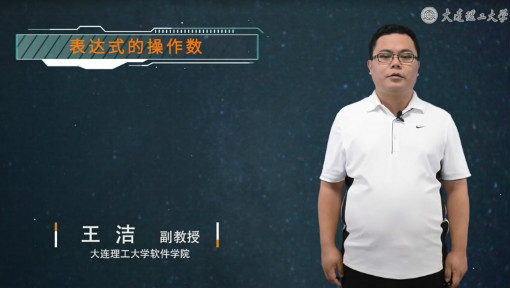
当前课程知识点:Production Engineering > Chapter 8 Hydraulic Fracturing(II) > 8.2 Fracturing Fluids > 8.2.3 Rheological Properties of Fracturing Fluids
返回《Production Engineering》慕课在线视频课程列表
返回《Production Engineering》慕课在线视频列表
同学们好
本节我们学习压裂液的流变性
首先我们先看一下
各类压裂液的流变曲线
对于牛顿流体
我们得到的流变曲线
是剪切速率和剪切应力之间
是一个过原点的一条斜直线
写出的本构方程
是剪切应力和剪切速率之间的关系
其中比例系数就是流体的粘度
我们知道 压裂液因为它需要造缝
需要携砂
一般具有比较高的粘度
也就是各种的压裂液
基本上是属于非牛顿流体的性质
其中非牛顿流体中最显著的一种代表
就是幂律性的流体
这是幂律性的流体剪切应力
和剪切速率之间的对应关系
它是一个指数的形式
本构方程是这样的一种形式
其中K指的是稠度系数
而n表达的是流态指数
如果我们将幂律流体的本构方程
写成牛顿流体的本构方程的形式
也就是将这个式子进行一个变形
提出来一个D
然后我们写成这样一种形式
那么对应牛顿流体的粘度这个位置
我们得到的这个μa
我们就称它为表观粘度 也叫视粘度
为什么要进行这样的一个处理
主要就是 我们通过这种处理办法之后
对于幂律性流体的流动规律
就可以采用牛顿流体的一些流动规律的
表达式或者是方程
只不过就是将表观粘度代替了牛顿流体的粘度
这样很多牛顿流体的一些流动问题
我们就可以把它扩展到应用在幂律性流体上
除了幂律性流体这种非牛顿流体之外
还有其它一些类型的压裂液
这些类型 比如说是这种
带有屈服值的这种宾汉型的液体
它是一种斜直线
还有就是叫做屈服假塑型的
这种也是一个指数形式
但是它有一个屈服值
还有就是叫胀流型的液体
这种胀流型的液体 也是一种指数形式
但是它的n是大于1的
这些类型的非牛顿流体
同样地我们也可以根据本构方程的变形
得到它所对应的视粘度
从而可以使用牛顿流体的
一些流动规律的描述方法
来描述这些非牛顿流体的流动问题
在流动的过程当中
视粘度跟本构方程是有关系的
而本构方程跟流动的介质
或者是叫流动的空间是相关的
我们在整个的油井的压裂过程当中
有哪些流动的空间呢
应该分为两类
一类就是管流
也就是包括地面管线的流动
以及井筒内的流动
以及经过射孔孔眼的流动
我们都可以把它归结为管流
另外的一种就是在裂缝当中的缝流
对于管流来说
我们可以写出在圆管内流动的本构方程
写出这个本构方程之后
根据一定的变形
我们就可以得到
它所对应的视粘度的表达式
同样地 对于缝流
我们写出缝流 幂律流体
在裂缝中流动的本构方程
写出本构方程 同样我们可以经过变形
得到缝流情况之下的视粘度的表达式
管流的有了 缝流的有了
也就意味着
我们通过这种视粘度的处理的办法
可以得到管流和缝流下的
流动规律的计算
解决了视粘度的问题
重点的我们是利用视粘度
来求取摩阻的问题
而整个的压裂过程当中
我们介绍压裂液的特性介绍了两种
一种叫做滤失性
滤失性的问题我们解决了
在裂缝当中 我们期望
裂缝是一种特定的形态
考虑滤失的作用之下
我们就可以设计总的压裂液的注入量
在抵消了滤失量之后
剩余的就是在裂缝当中的
压裂液的总体积了
而另外的压裂液的一种特性
就是它的非牛顿的流变性
另外的流变性
主要是解决了摩阻的问题
摩阻的问题就是当压裂液在地层当中
要压开裂缝 要完成大于破裂压力
这样一个目标
我们需要在井口设定一个施工的压力
而这个施工的压力
就要抵抗整个压裂液流动过程当中的
摩擦阻力的损失
换句话说
抵消了摩擦阻力损失之后
剩余的压力要完成高于破裂压力
这样的一个目标
对于摩阻的计算
无论是油管内的 还是射孔孔眼内的
还是在裂缝当中的摩阻
都需要有相应的公式计算
需要注意的是
在这些计算当中我们需要引入
你所应用的压裂液特定的视粘度
在现场中
有一种压裂的方式叫限流压裂
这种限流压裂
就是利用了经过孔眼的摩阻
来调节它的施工压裂的大小
从而对于不同的层位来实施压裂的过程
以上就是我们本节介绍的主要内容
同学们再见
-1.1 Main Tasks of Production Engineering
--1.1 Main Tasks of Production Engineering
-1.2 Flow in Production System
--1.2 Flow in Production System
-Problems
--Chapter 1 - Problems
-2.1 IPR Curve and Well Productivity
--2.1.1 Single-Phase Oil Inflow Performance Relationships
-2.2 Vogel's IPR and Applications
--2.2.2 Determination of IPR Curves Using Vogel's Equation
--2.2.3 Skin Factor and Flow Efficiency
--2.2.4 Extension of Vogel's Equation for Non-Complete Wells
--2.2.5 Combination Single-Phase Liquid and Two-Phase Flow
-Problems
--Chapter 2--Problems
-3.1 Two-Phase Flow in Wellbore
--3.1.1 Flow Regimes in Vertical Flow
-3.2 Two-Phase Vertical Flow Pressure Gradient Models
--3.2.1 Two-Phase Pressure Gradient Equations
--3.2.2 Predicting Gas-Liquid Flow Regimes Using the Okiszewski Correlation
--3.2.3 Pressure Gradient Calculation Using the Okiszewski Correlation
-3.3 Vertical Lift Performance
--3.3 Vertical Lift Performance
-Problems
--Chapter 3--Problems
-4.1 Nodal Analysis Approach
--4.1.2 Solution Node at Bottom of Well
--4.1.3 Solution Node at Wellhead
-4.2 Flow through Chokes
--4.2.2 Solution Node at Choke
-Problems
--Chapter 4--Problems
-5.1 Principles of Gas Lift
--5.1.2 Initial Kick-off of Gas Lift
-5.2 Gas Lift Valves and Gas Lift Completions
-5.3 Gas Lift Design
--5.3.1 Gas Lift Design for Specific Production Rate
--5.3.2 Gas Lift Design for Specific Injection Rate
--5.3.3 Kick-off Procedure with Unloading Valves
--5.3.4 Design Depths of Unloading Valves
-Problems
--Chapter 5--Problems
-6.1 Introduction of Surface and Downhole Equipment
-6.2 Operating Principle of Sucker Rod Pumps
-6.3 Pumping Unit Kinematics
--6.3.1 Motion of Polished Rod-Simple Harmonic Motion
--6.3.2 Motion of Polished Rod-Crank and Pitman Motion
-6.4 Polished Rod Load
--6.4.3 Peak Polished Rod Load and Minimum Polished Rod Load
-Problems
--Problems for chapter 6: Sucker Rod pumping I
-6.5 Calculation of Counterbalancing, Torque and Power
--6.5.1 Balance of Pumping Unit
--6.5.2 Counterbalancing Calculation
--6.5.3 Torque and Torque Factor
-6.6 Volumetric Efficiency of Pump
--6.6.2 Gas Effect on Pump Performance
--6.6.3 Measures of Enhancing Pump Volumetric Efficiency
-6.7 Design of Pumping System
--6.7.1 Strength Calculation and Design of Sucker Rod Strings
--6.7.2 Design Procedures of Pumping System
-6.8 Analysis of Sucker Rod Pumping Well Conditions
--6.8.1 Acoustic Surveys and Analysis of Annular Liquid Levels
--6.8.2 Introduction of Dynamometer Card
--6.8.3 Typical Dynamometer Cards
-Problems
--Problems: Chapter 6: Sucker Rod Pumping (II)
-7.1 Water Injection System
--7.1.1 Water Resources and Water Treatment
--7.1.2 Introduction of Water Injection System
-7.2 Injectivity Analysis
--7.2.1 Injectivity and Injectivity Index Curves
-7.3 Injection Tubing String
--7.3 Introduction of Injection Tubing Strings
-7.4 Analysis and Application of Injectivity Index Curves
--7.4.1 Analysis of Injectivity Index Curves
--7.4.2 Injection Choke Deployment
-Problems
--Chapter 7--Problems
-8.0 Introduction
-8.1 The Fracturing of Reservoir Rock
--8.1.1 Basic Rock Mechanics Parameters
--8.1.4 Fracture Initiation Conditions
-Problems
--Chapter 8(I)--Problems
-8.2 Fracturing Fluids
--8.2.2 Fluid-Loss Properties of Fracturing Fluids
--8.2.3 Rheological Properties of Fracturing Fluids
-8.3 Proppants
-8.4 Hydraulic Fracturing Design
--8.4.1 Productivity Index of Hydraulic Fracturing Wells
--8.4.2 Fracture Geometry Models
--8.4.3 Design Procedure for Hydraulic Fracturing
-Problems
--Chapter 8(II)--Problems
-9.0 Introduction
-9.1 Carbonate Acidizing
--9.1.1 Mechanism of Carbonate Acidizing
--9.1.2 Effect Factors of Reaction Rate
--9.1.4 Effective Distance of Live Acid
-9.2 Sandstone Acidizing
--9.2.1 Mechanism of Sandstone Acidizing
--9.2.2 Mud Acid Treatment Design
-9.3 Acidizing Treatment Technologies
--9.3.2 Acidizing Treatment Operations
-Problems
--Chapter 9--Problems
-Final Exam
